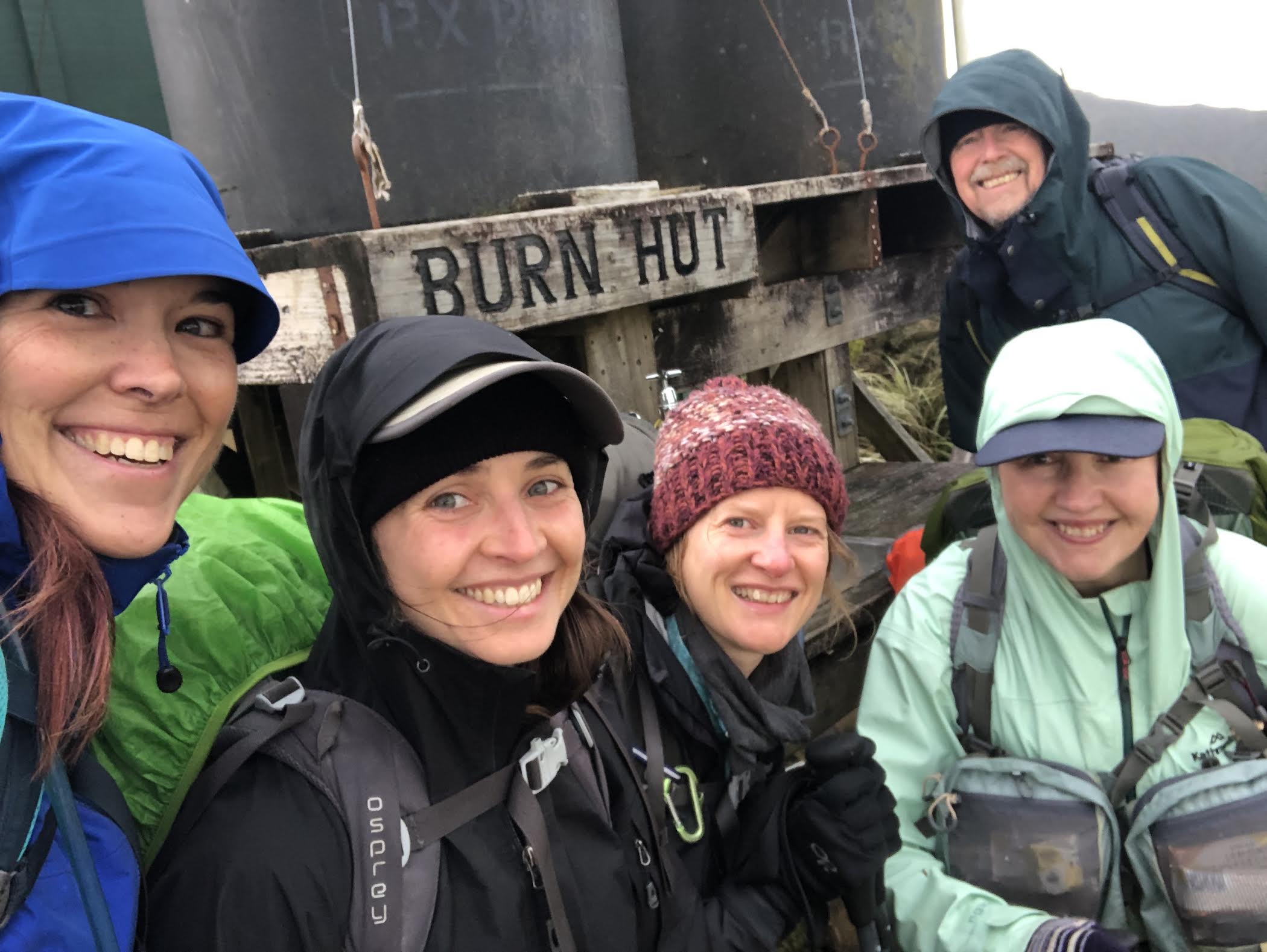Our group met at Wellington Railway Station at 8am on Saturday morning. We drove to Shannon, and then into the hills behind the Mangahao Power Station. Opened in 1924, this was New Zealand’s first large hydro power station.
The road is very windy and it seemed to take a very long time to reach the car park at the Mangahao Lower No 2 Reservoir. It was raining steadily, so we sat in the car for five minutes, in case it eased off. No such luck; the rain never let up all Saturday.
From the topo map, the initial part of the track looks like an easy amble alongside the river. But hidden between the contour lines there’s a lot of scrambling up and down. According to DOC, it should take about an hour to reach the point where the track takes a sharp right-hand turn up the ridge. We took longer, because about three-quarters of the way along the flat part, we discovered a large, fairly recent slip – with a slide-path straight down to the river. This took us a while to negotiate (in the rain, of course).
The rain wasn’t too bad as we moved uphill through the bush. But once out in the open, the track turned into a stream. We trudged on, heads down against the lashing rain – really, really looking forward to getting to the hut (and also, hopefully, not having to camp).
We took four hours 20 minutes to walk to the hut (DOC suggests 3-4 hours for the route). It rained the whole time and was very windy and unpleasant on the top where the bush was around head-high. The weather certainly tested our rain gear, some of which was found wanting. I’ve been on many tramps and this was by far the wettest.
But Burn Hut is a very nice and well designed basic hut, sleeping six. And it’s free! Although there is no verandah, the hut has an interior vestibule, useful for removing and hanging up wet rain jackets, overtrousers, and boots, and there’s some space above floor level for packs. So we were able to enter the bunk room fairly dry. No heat source is provided, but we generated enough warmth in the cosy hut to feel quite comfortable.
There are expansive views on all sides, though on Saturday we didn’t really notice because of the bad weather. The long drop is nearby, but in an extremely exposed position. The door had come off its hinges and was wired to the side of the loo – wide open to the elements. We all hoped that we wouldn’t need to use it during the night.
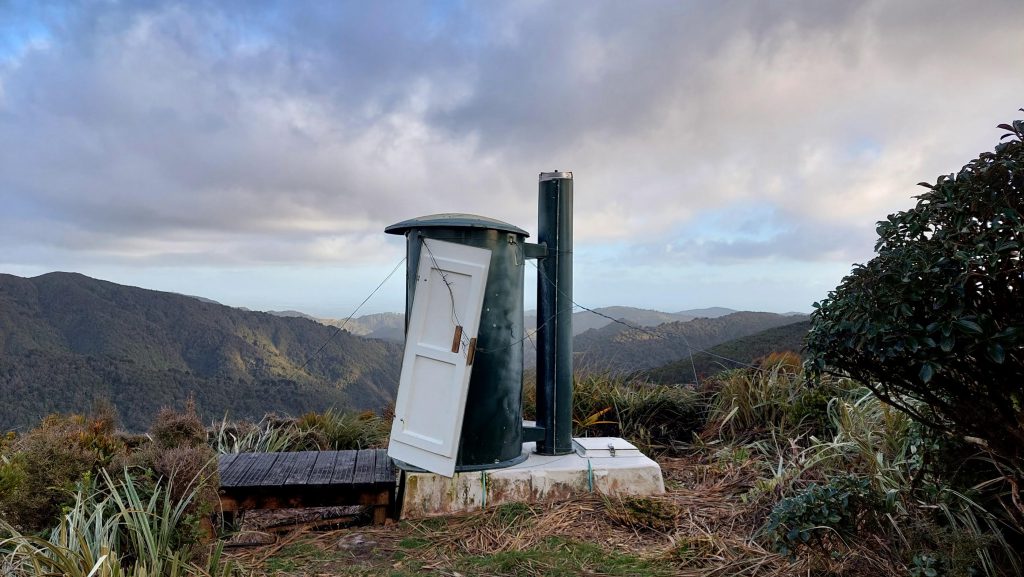
After our shared meal, we settled down in our sleeping bags to listen to rain on the rooftop and hoped for better weather in the morning.
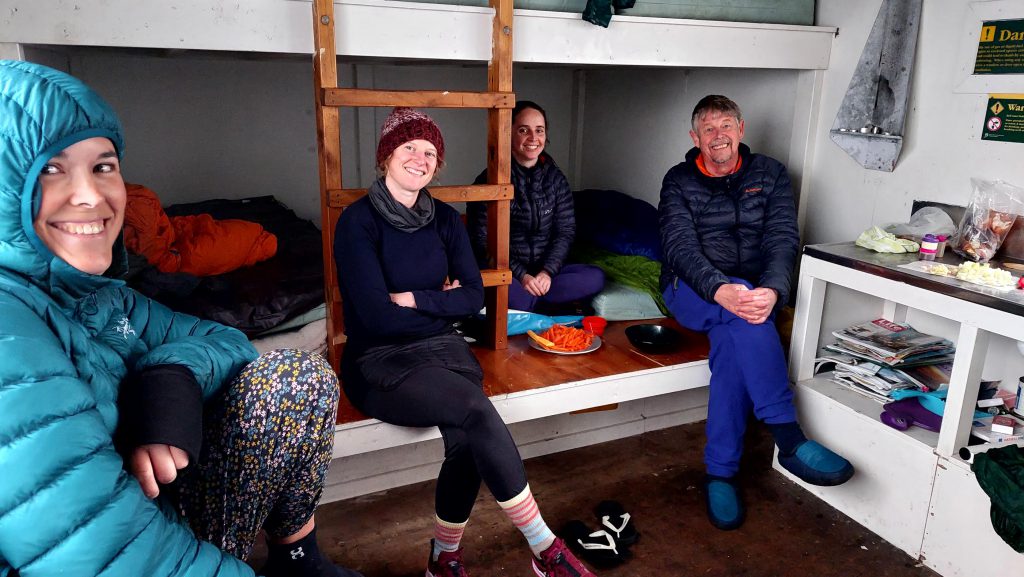
On Sunday we indeed had better weather and a quicker trip back to the carpark. The water gushing down the dam’s tailrace was very impressive, and very different from the trickle we’d seen on Saturday morning.
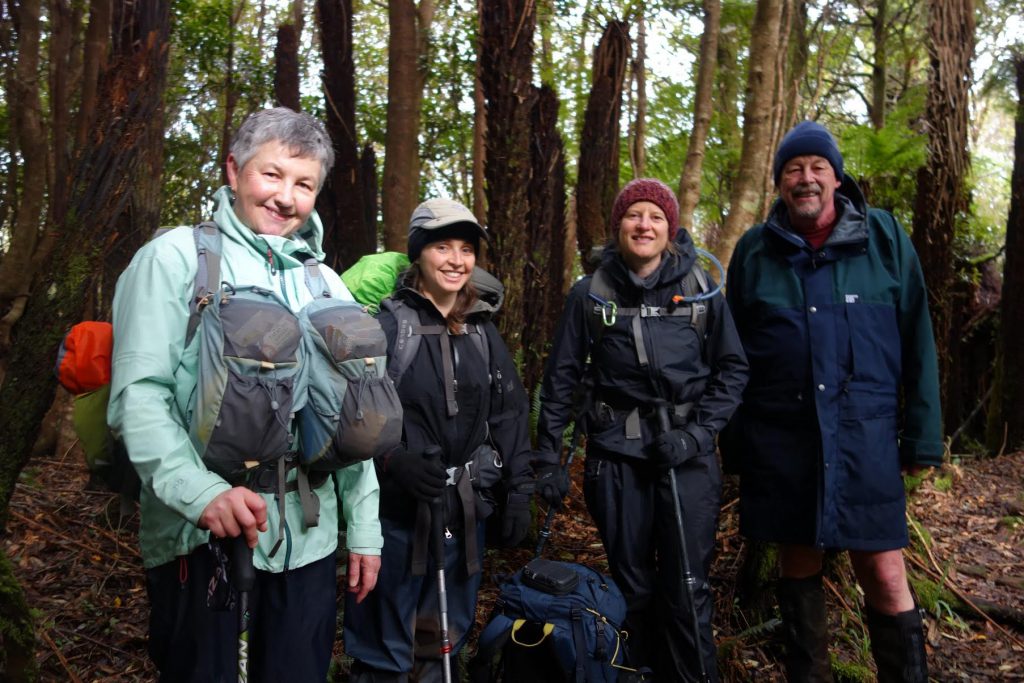
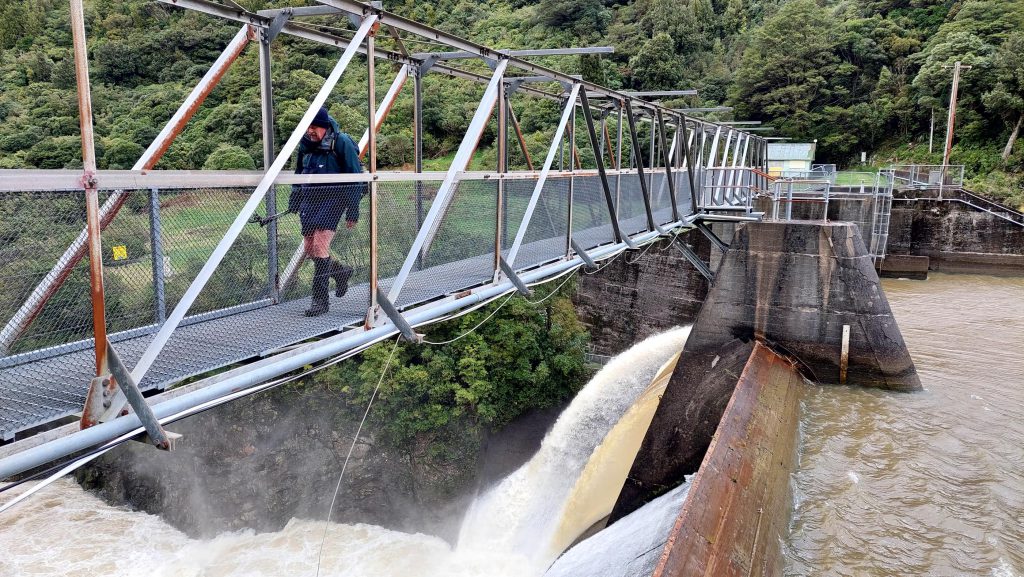
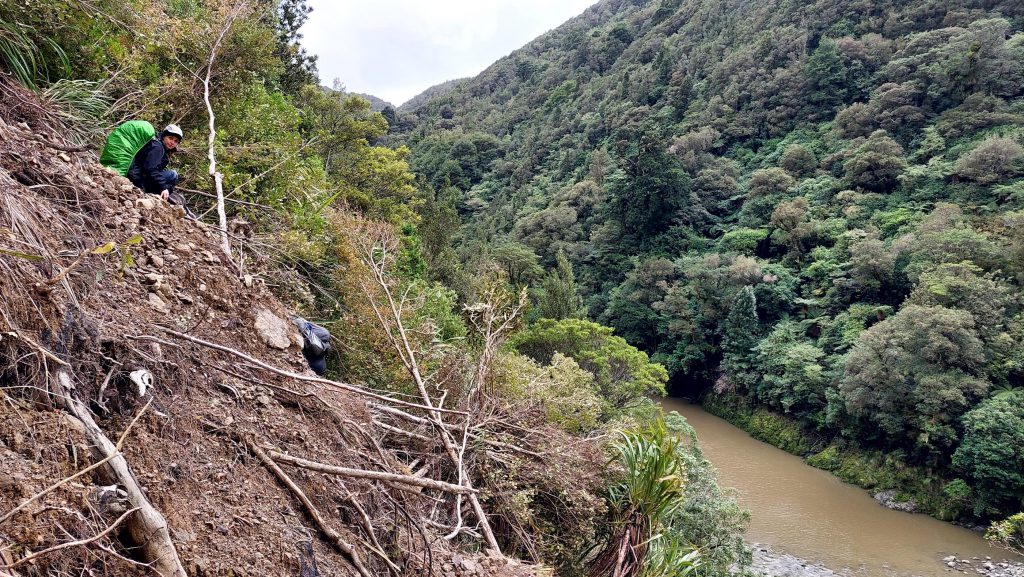
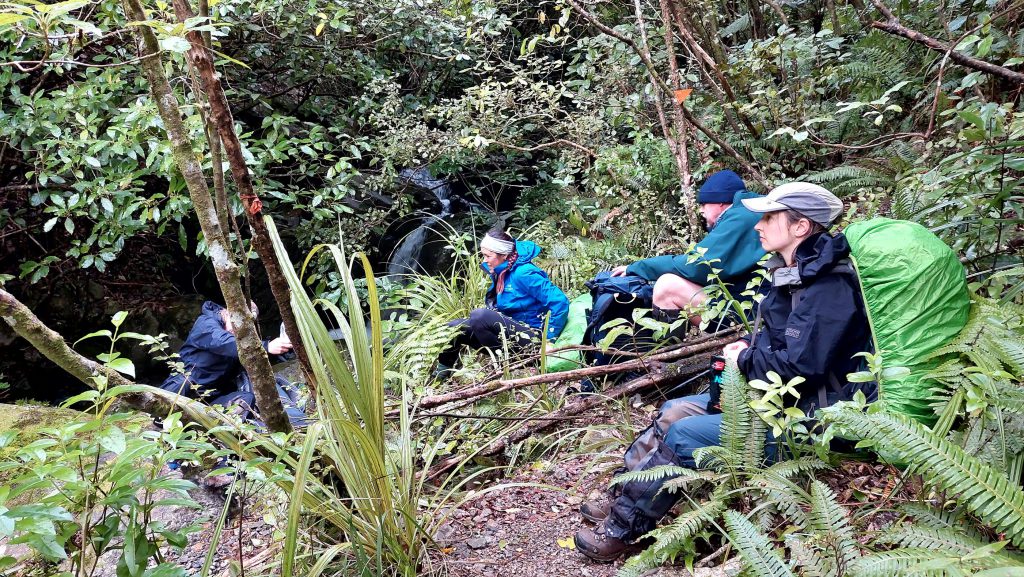
A good trip despite the weather.

